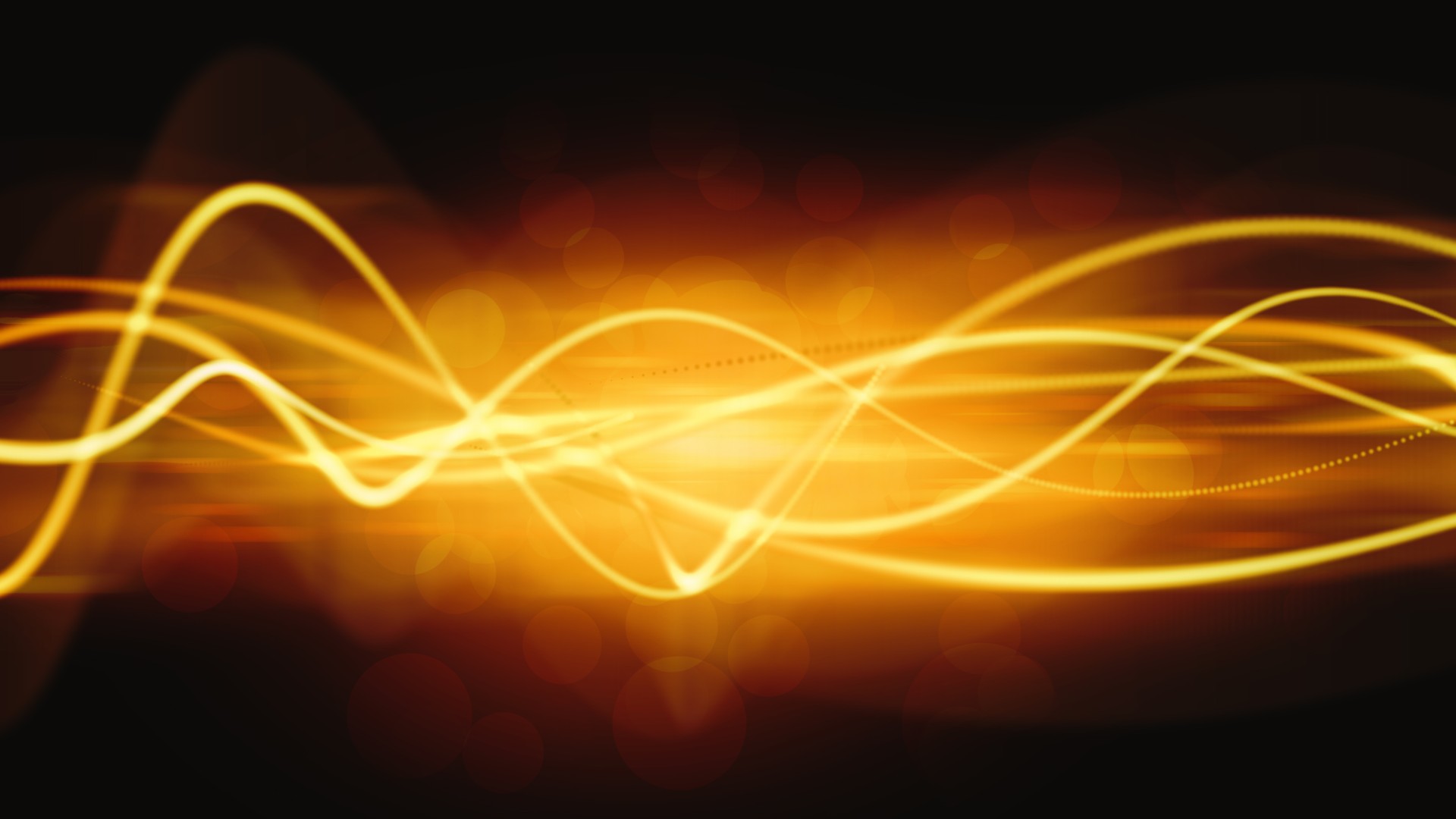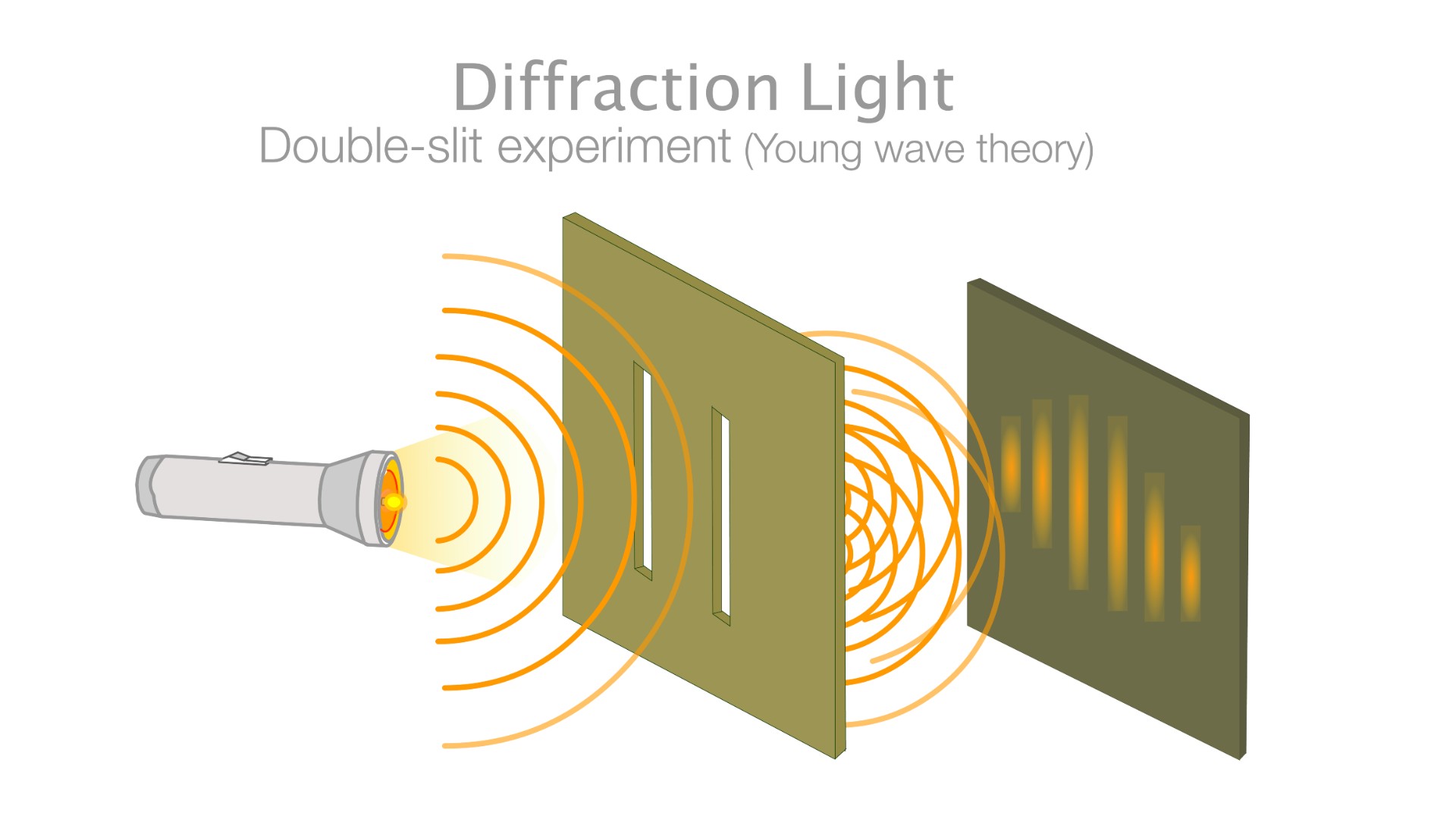What are photons?
Photons carry the electromagnetic force, and act as both particles and waves.

Photons are fundamental subatomic particles that carry the electromagnetic force — or, in simpler terms, they are light particles (and so much more). The photon is also the "quantum," or fundamental unit, of electromagnetic radiation. Everyone is surrounded by photons: The light coming from the screen you're viewing is composed of photons, the X-rays doctor use to see bones are made of photons, the radio in a car receives its signal from photons, and the magnets on a fridge use photons to hold themselves up.
Like all other subatomic particles, photons exhibit wave-particle duality, meaning that sometimes they behave as tiny particles and sometimes they act as waves. Photons are massless, allowing them to travel at the speed of light in a vacuum (299,792,458 meters per second) and can travel an infinite distance.
Photon discovery
Although physicists have studied the nature of light for centuries, arguments went back and forth as to whether light was made of tiny particles or was wave-like in nature. In the late 1800s, however, the pioneering work of German physicist Max Planck changed the entire picture.
Planck was studying something called blackbody radiation, or light from a special device that emitted light at all frequencies as efficiently as possible. Until Planck, nobody could explain the spectrum of light coming from these devices, so Planck added a "fix" to the equations. By assuming that light could be emitted only in discrete chunks of energy, known as quanta, he was able to develop a formula that perfectly explained the blackbody spectra, according to HyperPhysics.
Physicists weren't exactly sure what to make of Planck's result, but several years later, Albert Einstein took it one step further. To explain the photoelectric effect, which is the release of electrons from a metal when light shines on it, Einstein proposed that light itself is composed of discrete little chunks, according to the American Physical Society. Over time, those little chunks became known as photons.
The work of Planck, Einstein and others to study the nature of light kick-started the development of quantum mechanics.

Are photons particles?
Strictly speaking, photons are neither particles nor waves; they are a combination of both. In some situations, their particle-like nature comes out more, and in others, their wave-like nature is more apparent.
Get the world’s most fascinating discoveries delivered straight to your inbox.
For example, a detector can register the arrival of a single photon, which appears as a point-like particle. The process known as Compton scattering involves a photon striking an electron, and in that situation, the photon acts as a particle.
However, it's impossible to predict exactly where or when a photon will strike a detector. In quantum mechanics, one can only assign probabilities to events. Those events are modeled by equations for waves, with peaks in the waves corresponding to regions of high probability of receiving a photon and troughs corresponding to regions of low probability, according to AccessScience by McGraw Hill.
This concept is best exemplified by the famous double-slit experiment, which solidified the dual wave-particle nature of light (and, eventually, other subatomic particles). When light passes through a screen with two slits cut into it, it forms an interference pattern on the detector on the other side of the screen, where the peaks of waves line up with each other in some places, and where the peaks and troughs cancel each other out in others. Even though only one photon passes through the screen at a time — with each individual photon acting like a particle — the interference pattern that emerges on the detector is the exact same pattern that would occur if waves were passing through the slits instead.

Do photons have mass and momentum?
Photons have zero mass, which allows them to travel at the fastest possible speed in the universe, the speed of light. However, they do have energy and momentum. The energy of a photon is given by Planck's constant times the frequency of the light, and the momentum of a photon is given by Planck's constant times the frequency of the light times the speed of light, according to the University of Calgary's Energy Education website.
The fact that photons have momentum enables a broad array of applications. For example, solar sails are experimental propulsion devices that use sunlight to push a spacecraft. According to NASA, the photons from the sun bounce off of the reflecting sail, thus imparting their momentum on the sail and moving the spacecraft.
Do photons experience time?
Our understanding of the rate of the passage of time comes from Einstein's theory of special relativity, which states that objects traveling closer and closer to the speed of light will experience slower and slower rates of the passage of time. In other words, moving clocks run slowly, according to John D. Horton of the University of Pittsburgh.
However, the mathematics of special relativity apply only to objects traveling more slowly than the speed of light and don't apply directly to photons, which do travel at the speed of light. Thus, it's impossible to say what a photon "experiences" in terms of the flow of time, because scientists have no mathematical language to support it. Another way to put this is that the concept of the flow of time is meaningless to photons.
Are photons affected by gravity?
Because photons have both energy and momentum, they are influenced by gravity. Under Einstein's theory of general relativity, which is our modern understanding of gravity, anything with any form of energy (including mass, momentum and torsion) is influenced by gravity. Specifically, massless particles, such as photons, follow "geodesics," which are paths of minimum distance from one point to another, according to EarthSky.
In general relativity, space-time is curved due to the influence of massive objects. This can make the "minimum distance" path a curved line, just as jets have to follow a curved path to go straight from one city to another, because Earth itself is curved.
The curvature of space-time affects photons in several ways. When photons are moving from a region of strong gravity to a region of weaker gravity, they will lose energy, which lowers their frequencies to the redder end of the spectrum. When photons pass near massive objects, their direction of motion will change.
Additional resources
- You can dig deeper into the relationship between light and time in this YouTube video hosted by the author of this article, astrophysicist Paul M. Sutter.
- For a fun exploration of the nature of quantum mechanics (which, of course, also discusses photons), check out "How to Teach Quantum Physics to Your Dog" (Scribner, 2010) by physicist Chad Orzel.
- The Physics Asylum also hosts a great video explainer on the nature of the photon, which you can watch here.
Bibliography
Afework, B., Boechler, E., Campbell, A., Hanania, J., Heffernan, B., Jenden, J., Street, K., & Donev, J. (2021, October 22). Photon. Energy Education. https://energyeducation.ca/encyclopedia/Photon
American Physical Society. (2005, January). This month in physics history: Einstein and the photoelectric effect. APS News. https://www.aps.org/publications/apsnews/200501/history.cfm#:~:text=Light%2C%20Einstein%20said%2C%20is%20a,collision%20produces%20the%20photoelectric%20effect
Hall, L. (2021, October 6). Advanced composite solar sail system: Using sunlight to power deep space exploration. NASA. https://www.nasa.gov/directorates/spacetech/small_spacecraft/ACS3
Kleppner, D. (2019). Photon. AccessScience. https://www.accessscience.com/content/511100
Nave, R. (n.d.). Blackbody radiation. HyperPhysics. Retrieved March 8, 2022, from http://hyperphysics.phy-astr.gsu.edu/hbase/mod6.html
Norton, J. D. (2018, October 10). General relativity. Einstein for Everyone. https://sites.pitt.edu/~jdnorton/teaching/HPS_0410/chapters/general_relativity/
Whitt, K. K. (2021, September 8). What is gravitational lensing? EarthSky. https://earthsky.org/space/what-is-gravitational-lensing-einstein-ring/#:~:text=Gravitational%20lensing%20occurs%20when%20massive,bending%20and%20magnifying%20the%20light

Paul M. Sutter is a research professor in astrophysics at SUNY Stony Brook University and the Flatiron Institute in New York City. He regularly appears on TV and podcasts, including "Ask a Spaceman." He is the author of two books, "Your Place in the Universe" and "How to Die in Space," and is a regular contributor to Space.com, Live Science, and more. Paul received his PhD in Physics from the University of Illinois at Urbana-Champaign in 2011, and spent three years at the Paris Institute of Astrophysics, followed by a research fellowship in Trieste, Italy.


